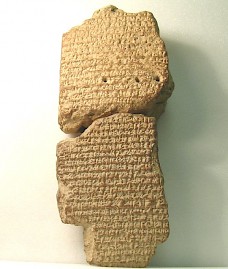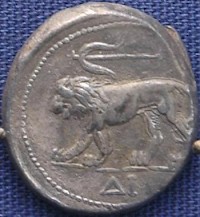Diadochi 6: The Babylonian War
Diadochi ("successors"): name of the first generation of military and political leaders after the death of the Macedonian king and conqueror Alexander the Great in 323 BCE. To settle the question whether his empire should disintegrate or survive as a unity, and, if so, under whose rule, they fought several full-scale wars. The result, reached by 300, BCE, was a division into three large parts, which more or less coincided with Alexander's possessions in Europe, Asia, and Egypt.
During the next quarter of a century, it was decided whether these states could endure. As it turned out, there were no great territorial changes, although there were dynastic changes. After 280, the period of state-forming came to an end with three great states: Antigonid Macedonia, Ptolemaic Egypt, and the Seleucid kingdom in Asia.

The peace treaty of 311 did not inaugurate a true age of peace. On the contrary. Every signatory had a secret agenda and used the warless years to build new armies and prepare for war. The period of uneasy peace lasted until 307.
Antigonus Monophthalmus used the truce to attack Seleucus, the satrap of Babylonia, who had not signed the treaty. Seleucus' arrival at Babylon can be dated between 13 May and 1 June 311 (text; more). Although there was some fighting in one of the citadels, Seleucus' assault on the world's largest city had been an easy success, which had been facilitated by the fact that Antigonus' satrap of Babylon, Peithon, had died a few months earlier in the battle of Gaza. From the Babylonian Diadochi Chronicle, we learn that Seleucus used a strategem involving water of the Euphrates, but the details remain unclear.
Almost immediately, the satrap of Media, Antigonus' friend Nicanor, and the satrap of Aria, Euagoras, marched on Babylon, but Seleucus was waiting for them near the Tigris. When Euagoras was killed during the battle, his men went over to Seleucus, and Nicanor was forced to retreat. Seleucus immediately took Nicanor's capital Ecbatana and enlisted his soldiers in his own army. He now marched to the south, where he captured Susa and added Elam to his possessions. Soon, Media was added. In a half year's time, he had become a powerful ruler, and he accepted the title Nicator, 'victor'.
He was still in Media when Demetrius arrived on the scene (early 310; text). By this time, the peace treaty had been concluded, and Antigonus could afford to send soldiers to the east. The attackers started to besiege the two citadels of Babylon. When the first one was captured and looted, the main force left the city, leaving one Archelaus as satrap to take the second citadel. Demetrius had orders to return, and Seleucus organized a guerilla war against Archelaus.
In August 310, Antigonus himself arrived in Babylon. There were street-fights, but Antigonus was unable to capture all buildings he wanted to take, and appears to have left the city in March 309, although the struggle in the countryside lasted until after 10 April 309, New Year's day. During the summer, Antigonus conducted punitive campaigns in the neighborhood, and Seleucus continued the guerilla. The struggle must have had a devastating effect on city and countryside of Babylon. The commodity prices rose to incredible heights, as is recorded by the author of the Babylonian Diadochi Chronicle.
Finally, Seleucus and Antigonus met each other in a full-scale battle. According to the Greek author Polyaenus, Seleucus ordered his men to have breakfast during the night, and attacked before dawn. His enemies were hungry and unarmed, and Antigonus was forced to go back to Syria (30 or 31 August). The two parties must have concluded a peace treaty, because Seleucus proceeded to conquer the eastern satrapies, and Antigonus was active in the west.

He had every reason to return. In the meantime, Ptolemy had added Cyprus to his territories, and moved to the Aegean Sea, where he gained a bridgehead on the island Cos (winter 309/308). From there, he sailed to Delos, where he reorganized the Nesiotic League (above), which would support the ruler of Egypt. Antigonus was compelled to focus on the west.
Seleucus now had a free hand to go to the east. He conquered Bactria and invaded India. His victories were duly commemorated with a coin issue - although the particlar coin to the left was struck a quarter of a century after the events.